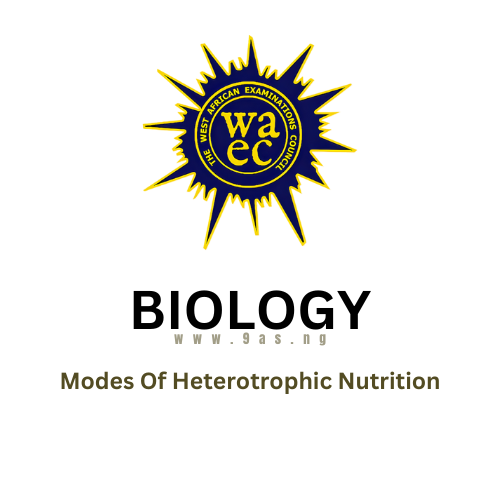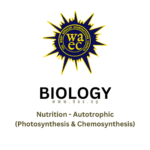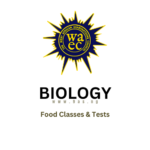OBJECTIVES
1. Analysis of the gut content of an animal showed that it contained small pieces of bone, seeds, roughage and insects. The animal is likely to be a/an
A. carnivore.
B. herbivore
C. insectivore.
D. omnivore.
2. A beaker of pond water containing few specimens of Euglena was placed in a dark room for two weeks. At the end of this period, the specimens of Euglena were still alive because they were
A. able to carry out holozoic nutrition.
B. able to carry out photosynthesis using carbon dioxide in the pond water.
C. better adapted to life in darkness than to life in light.
D. not avercrowded.
3. The organism that can carry out both autotrophic and heterotrophic modes of nutrition is
A. Chlamydomonas.
B. Eudorina.
C. Euglena:
D. Spirogyra.
4. Which of the following protozoans feeds parasitically?
A. Paramecium.
B. Chiamydomonas.
C. Plasmodium.
D. Euglena.
5. Which of the following features of the tadpole indicates that the animal is herbivorous? Possession of
A. operculum.
B. muscular tail.
C. long coiled intestine,
D. Internal gills.
6. An example of a saprophytic relationship is a/an
A. vulture feeding on decaying meat.
B. mushroom growing on decaying vegetation.
C. boy eating stale bread.
D. earthworm feeding on decaying vegetation.
7. Which of the following groups consists of heterotrophs?
A, Mucor, chlamydomonas and Euglena.
B. Spirogyra, Mucor and Mushroom.
C. Man, Mucor and Mushroom.
D. Man, Maize and Cowpea.
8. Which of the following is not an example of a heterotrophic mode of nutrition?
A. Symbiosis.
B. Parasitism.
C. Commensalism.
D. Holophytism.
9. An organism is considered a heterotroph when it
A. feeds on inorganic food.
B. feeds on already manufactured food.
C. fixes atmospheric nitrogen.
D. respires anaerobically.
10. Which of the following organisms feeds both autotrophically and heterotrophically?
A. Hydra.
B. Paramecium.
C. Mucor.
D. Euglena.
11. The mode of nutrition which describes feeding habit in animals is
A. autotrophic.
B. holazoic.
C. holophytic
D. saprophytic.
12. The type of nutrition shown by Spirogyra is
A. symbiosis.
B. holophytic.
C. holozaic
D. chemosynthetic.
13. Which of the following plants is a carnivore?
A. Desmodium.
B. Sundew.
C. Mushroom.
D. Platycerium.
14. Hydra feeds by
A. digesting its food extra cellularly.
B. absorbing food digested by other organisms.
C. symbiotic association.
D. masticating the food particles.
15. The following organisms are examples of carnivorous plants except
A. Glorioso.
B. Venus flytrap.
C. Pitcher plant.
D. Utriculario.
16. Organisms that feed on dead, decaying tissues of other organisms are known as
A. parasites.
B autotrophs.
C. heterotrophs.
D. saprophytes.
17. The type of nutrition in which organisms take in solid organic materials into their body is
A. holoroic.
B. symbiotic.
C. saprophytic.
D. parasitic.
18. The capturing and digestion of insects by a pitcher plant is a special form of nutrition that is
A. chemosynthetic.
B. saprophytic.
C.heterotrophic.
D. autotrophic.
THEORY
1. Describe briefly the mode of feeding in tapeworms
2. Name three organisms that carry out holozoic mode of nutrition
3. The table below indicates different methods by which organisms obtain food. Place the following Organisms under the headings in the table below: Human, Mushroom, Venue flytrap, Waterleaf plant, Tapeworm, Elephant grass, Housefly, Lichen, Spirogyra, Rhizopus.
| Mode of Nutrition |
| Holozoic | Parasitic | Symbiotic | Saprophytic | Autotrophic |
4. Describe the saprophytic nutrition of Rhizopus
5. Describe the process of feeding in: (i) Hydra, (i) Amoeba
5. Name two types of heterotrophic modes of nutrition in animals and give two examples each of the organisms that carry out the modes of nutrition



